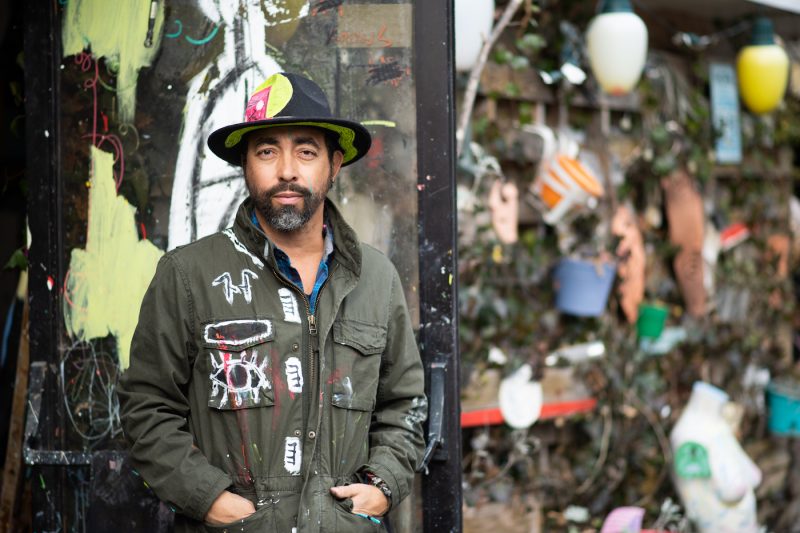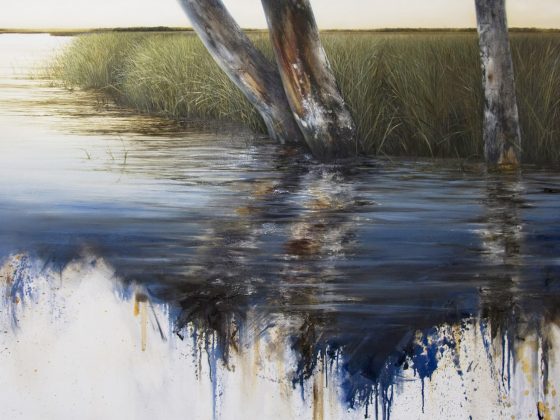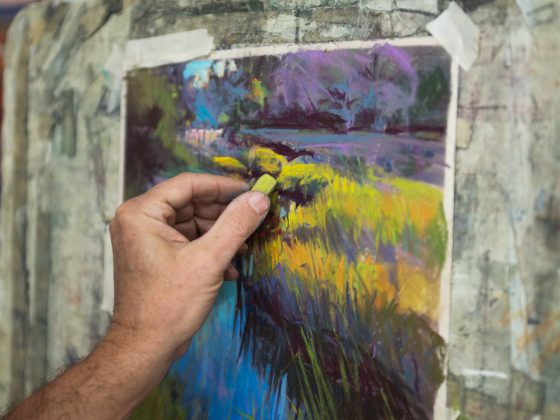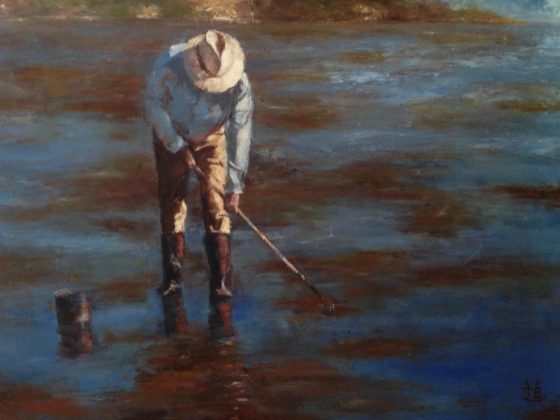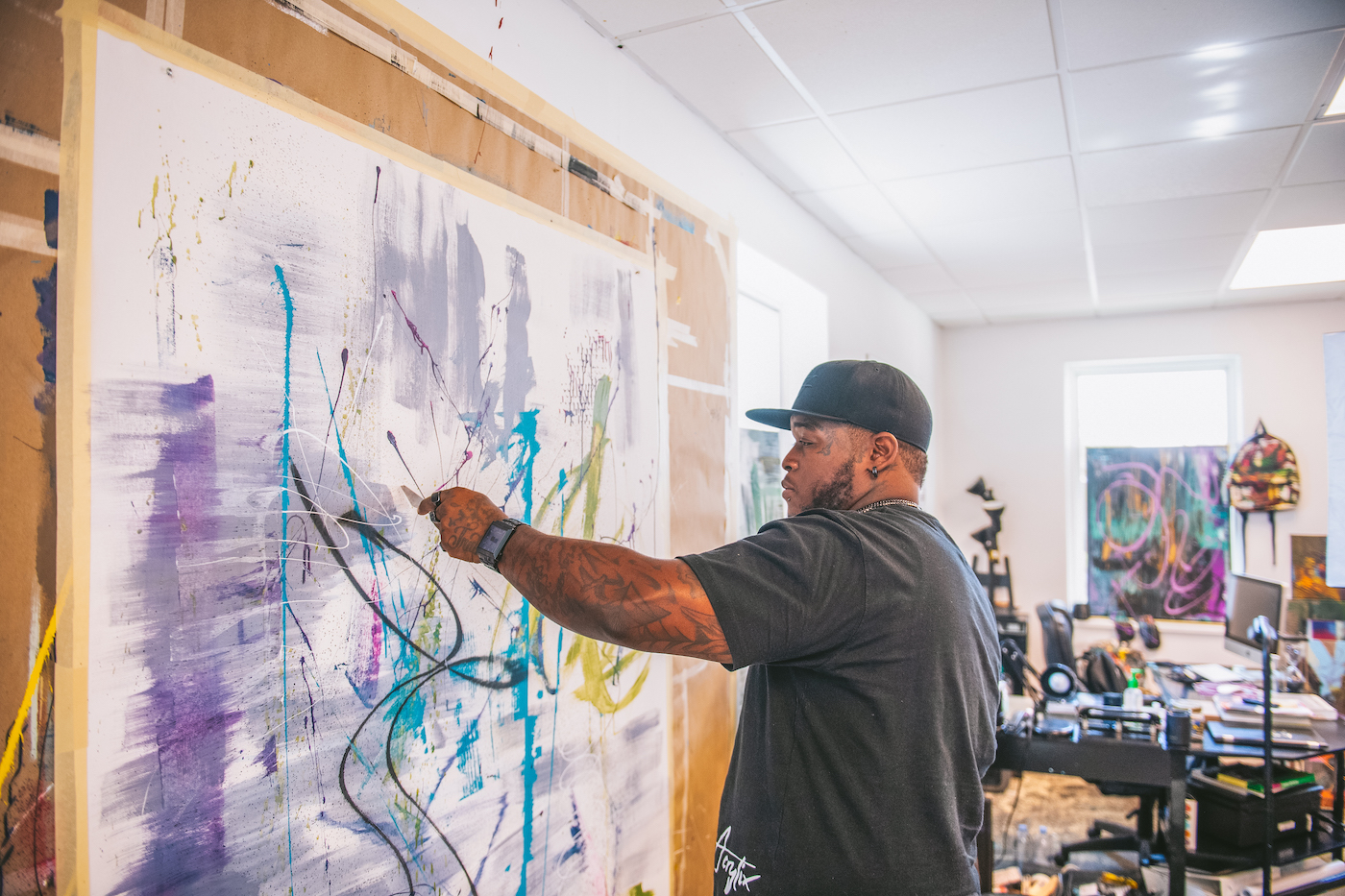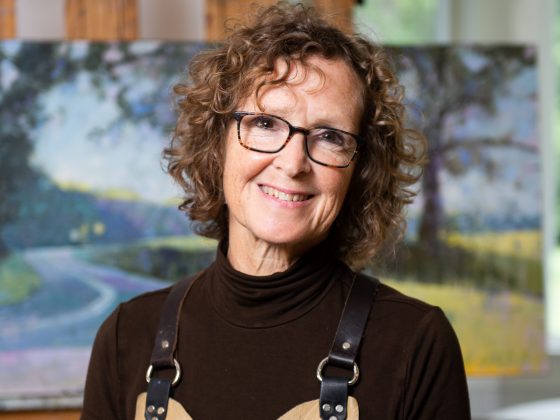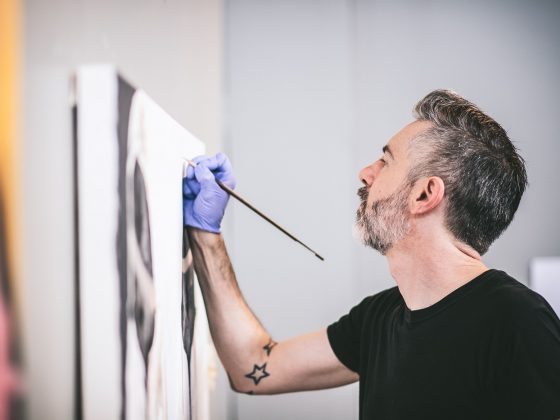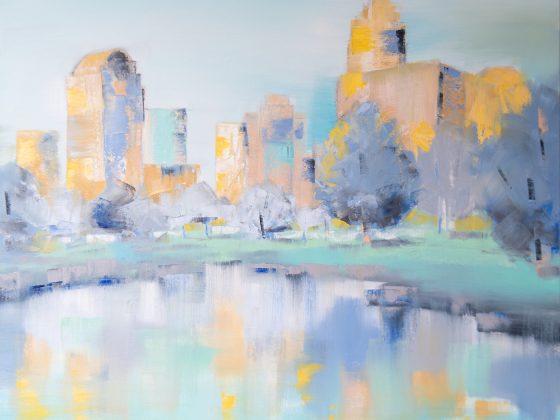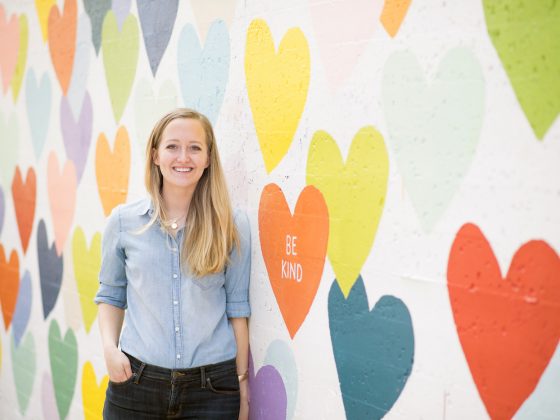Nico Amortegui grew up in Bogotá, Colombia amid a close-knit family of artists and creators. He moved to the United States at the age of 17 and spent a period of time living undocumented. This experience left an indelible mark on Nico Amortegui, and now he creates in dedication to the underdog, for those defying the odds in order to live out their humanity or compassion.
Here’s what Nico Amortegui had to say about his artistic practice and the impact of his work:
How did you successfully turn your passion for art into a career?
I made time to create and the more I did so, the more it became a necessary daily practice.
I think any career as a full-time artist requires a certain level of crazy, a slightly obnoxious level of tenacity, and no fear of failure. For me, it evolved in such a way that there was no other choice.
What is the process like for you from the start to finish of a piece?
Free flow paint slinging at first. The image is there waiting to be materialized. Maybe it sounds cliche, but it is definitely an energy I release in that moment.
For my canvas pieces, I usually tap my creativity with music and a little mezcal. In general, I have to move to think and I paint-dance my energy out. It’s a flow. I will absolutely do sketches for murals, but it feels completely different than creating paintings.
You say you create portraits of people who have “defied the odds.” Who do you most want to paint next?
I want to paint more women that are/were change-makers. It’s important for my daughters to see. I should paint my wife for defying the odds and homeschooling them for almost a full year now!
Where do you typically draw your design or artistic inspiration from?
Traveling to new places is a big one for me. Folk art is almost an obsession. Art across indigenous and African cultures is fascinating to me and I love interesting architecture. A lot of what I paint is how I see symmetry and lines.
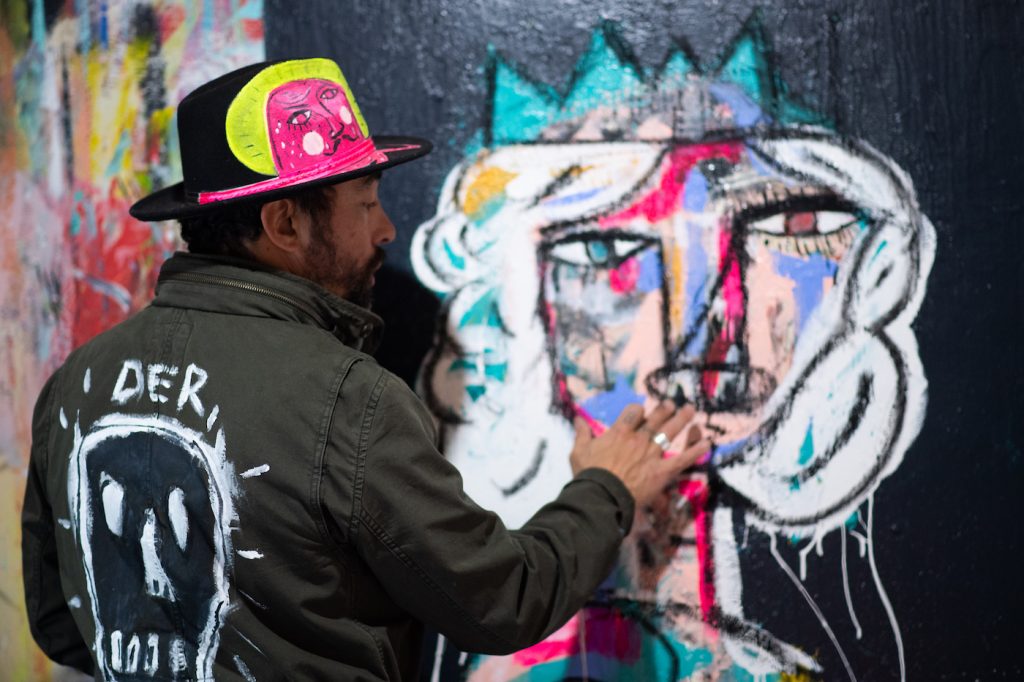
What has been the most rewarding thing about what you do?
Practically speaking, it’s being able to work from my home studio and be around for my girls.
Artistically speaking, creating and having an audience to share my art with is amazing. The most rewarding is when people really connect with my art. Most recently, I received a message from someone who walked into a gallery and had an impactful moment with one of my pieces. She wrote to me and explained how the piece affected her… It was completely humbling.
As a self-taught artist, what are some of the greatest lessons you have learned throughout your career?
I’ve learned not to take anything personally. No matter what you do, there will be supporters and haters, successes and failures. I believe there is no such thing as too much art in the world; so, I will keep creating.
How does your work comment on current social or political issues?
I identify with the struggle that various minority communities face. From injustices to discrimination or lack of resources and opportunities, it’s an issue that bothers me and that comes out in my work.
Who are some of the artists or makers who inspired you?
Artisans that have practiced their craft through familial generations are something I find truly amazing. I am also inspired by anyone that is determined to create. I met a ceramics artist in Mexico that was blind and his drive to create despite his disability was incredible.
What does the future hold for you?
Just to keep working and improving in all areas. Coming up, I have plans to work with metal and create more sculpture works.


